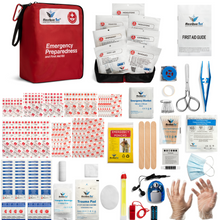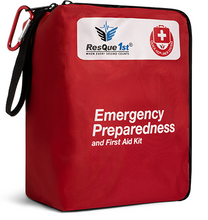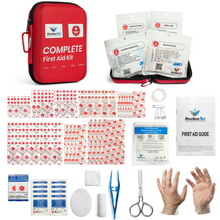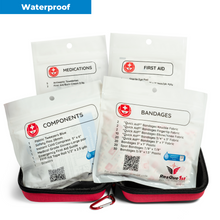
The weather's warming up, and it's getting nicer outside. This is a good thing. Unfortunately, the nicer weather comes with a major downside: bug bites. While most bites are little more than an annoyance, in some cases insect bites can lead to serious issues. Here's what you need to know about the most common spring and summer bug bites, and how to treat them.
Common Bite Number One: Mosquito - Mosquito bites are red, raised, and itchy. For most people, the issues stop there. A particularly strong reaction may lead to a small blister or welt. In the vast majority of cases, all that's needed for treatment is an anti-itch cream and time. However, keep an eye out for flu-like symptoms after a bite. This can be a sign that a mosquito-borne disease like West Nile virus may be present. If you suspect an infection has occurred, contact your doctor immediately.
Common Bite Number Two: Tick - Ticks tend to be found in wooded areas. They burrow into your skin if given a chance. Use a tweezer to gently remove any embedded ticks, then wash the bite with soap and water. In most cases, this is all the treatment necessary. However, it's important to keep an eye on the bite. If you notice a bulls-eye shaped rash or experience any flu symptoms or difficulty breathing, contact a doctor immediately.
Common Bite Number Three: Bee - A bee sting isn't technically a bite, but it can hurt just as much! In most cases, the only treatment necessary is to use tweezers to remove any stingers left behind and to wash the bite with soap and water. If a welt forms, a cold compress can help to relieve the swelling. However, keep an eye out for difficulty breathing, nausea, and dizziness: this can be a sign of a severe reaction that requires immediate medical attention.
Common Bite Number Four: Flea - As your furry friends start to spend more time outside, they have a greater chance of bringing a bit of nature back in with them. Flea bites don't cause much risk to humans, but they certainly can be an irritation. The biggest issue caused by these bites is infection from scratching. Reduce your risk and make yourself more comfortable by using anti-itch creams or oral antihistamines.
Common Bite Number Five: Fire Ant - If you're bitten by a fire ant, you'll know it by the itchy, pus-filled bites left behind. Resist the urge to pop the blisters, as this will only make the problem worse. Instead, use cold compresses, oral antihistamines, and oatmeal soaks to reduce irritation. If you notice dizziness, trouble breathing, throat swelling, or loss of consciousness, seek urgent medical attention - it is possible to have a severe allergy to fire ant venom.
While most springtime bug bites aren't serious, they can be a major annoyance. Your best bet is to avoid them altogether. Wear socks and closed toe shoes while working outside, and invest in a good bug spray if you plan to be outdoors often.











